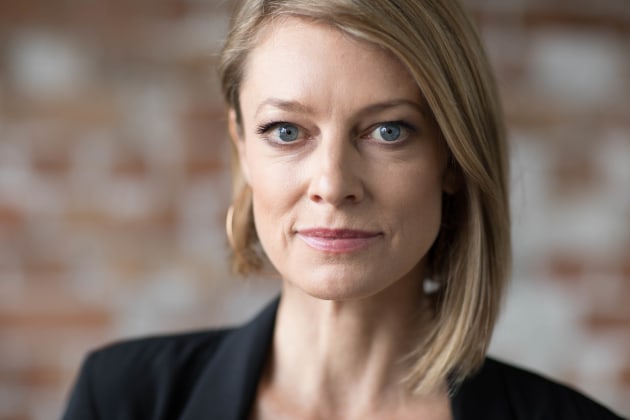Facing the pandemic #2: Australasian Dance Collective

Amy Hollingsworth’s first few months as Artistic Director of the newly branded Australasian Dance Collective (ADC) have been nothing if not challenging. Her first season for the year, THREE, set to premiere from April 1-4 at QPAC’s Playhouse, is cancelled and the whole of the company’s 2020 season is now on hold. Describing the past weeks as “tumultuous” and the uncertainty “very disconcerting”, she also acknowledges that getting through the next few months successfully will depend on the company’s response.
“It has encouraged us to use our ingenuity,” says Hollingsworth, noting that artists, having creative minds, are quite at home with ambiguity. Even with the current massive upheaval, artists can imagine how to move forward, minimising risk for both their dancers and community while continuing their art form. Hollingsworth is looking to introduce a host of new initiatives that will “facilitate our creative and training processes in a digital space, not just for professional dancers but for students and the community at large.”
One of these is the teacher development day on April 17, facilitated on-line by Hollingsworth. “We’ll have a mixture of live stream and pre-recorded content,” she enthuses, “with the focus very much on helping teachers with resources for delivering dance safely, on-line, for their students.” Hollingsworth is keen to create an interactive environment where teachers can voice concerns or difficulties they’re having. “I also have resources in the form of pre-recorded repertoire delivered in a way that students can learn on-line, and a series of creative tasks to help teachers find content for Term 2.”
ADC has also just announced an ongoing series of digital classes on Mondays and Wednesdays aimed at building community and connections, called “Collectively Connected”. And every Friday a series called “Collectively Inspired” will give insights into what the company dancers watch, read and listen to – their sources of inspiration.
Therefore, while this time is challenging, it also presents an opportunity for Hollingsworth to further explore her deep interest in the digital space. “Part of my vision for the company and imbedded into the strategic plan is a commitment to reimagining our performance medium, so this is an opportunity to accelerate that vision.”
Taking inspiration from the music industry, where musicians will release their latest product on an album before taking it on tour, Hollingsworth suggests that “maybe we start to engage in a digital capacity, then by the time we’re ready to tour, more people are familiar with our work, and more inclined to attend the live experience.”
One of Hollingsworth’s top priorities has been to take care of the artists, whose income stream from both performance and teaching has dried up. She is mindful “that we support not only our own dancers but many in our community as well”. The company is trying to be as nimble as possible, pulling forward annual leave for some of the staff, while the dancers have been doing collective Zoom classes daily.
“The moment we knew we had to start working remotely, we had a brain-storming session about the different ways the dancers could contribute,” adds Hollingsworth. “I am inherently aware of how much capacity dancers have in so many more ways than as a tool for a choreographer. All of them have been contributing, recording resources that we can share with teachers, and one or two have done an incredible job of editing footage. We’ve all been leaning into the wheel.”
“And,” she continues, “if we’re still having to socially isolate after the Easter break then the dancers and I are looking forward to experimenting and finding out how much creative development is possible in the digital realm.”
Hollingsworth is keen to acknowledge the support offered by Arts Queensland and the Queensland Government, which for them includes “gratefully received” relief on their home in the Judith Wright Centre. However, it is hard to predict what the rest of the year will look like with confidence. “You can plan for the best and prepare for the worst! We’re obviously looking at our forward programming and the timing of it and working closely with the board to make sure we can deliver as much connection and art for our audience as possible.”
Hollingsworth vividly recalls her grandmother’s advice years ago – “it’s not what happens to you, it’s how you react that defines you”– concluding that “I think we can create what we want out of this situation by trying to keep positive, being kind and supportive, and doing our best for the bigger picture.”
– DENISE RICHARDSON
To take part in ADC’s classes, go here.
For the teacher development day, go here.
AND ANOTHER THING: Daniel Murray from Empathic Consulting, who last week facilitated one of Australia Council for the Arts' Creative Connections webinars, writes in his key paper, 5 Key Strategies Leaders Must Not Ignore When Faced With Challenging Times, that unless managed well, a business or organisation is at risk of being a fatality of fear. A crisis like this, while challenging, is not a time for panic, says Murray. It is “a time for choice, strategy and leadership.”


